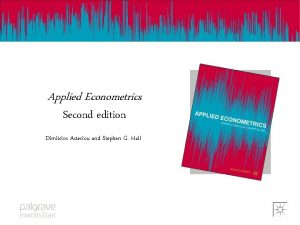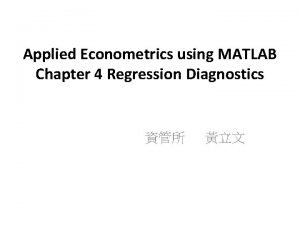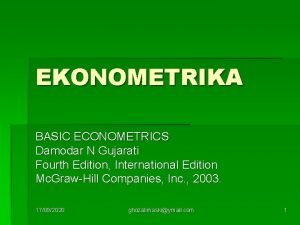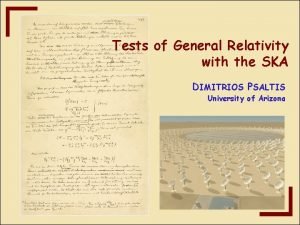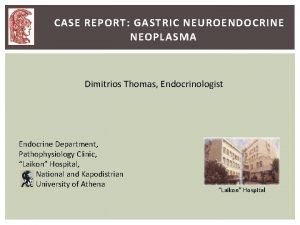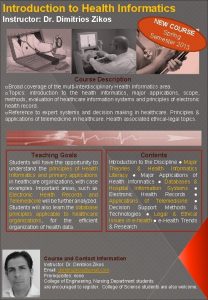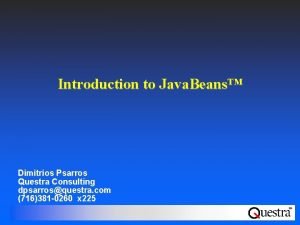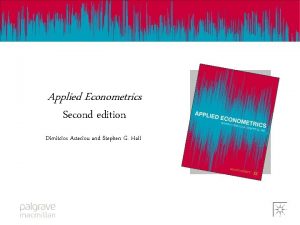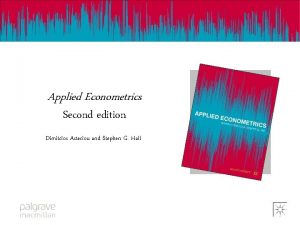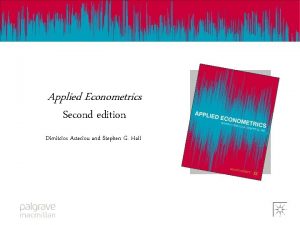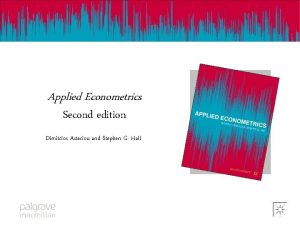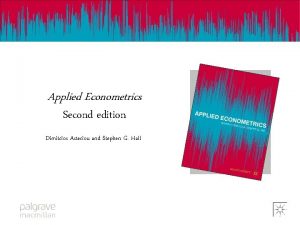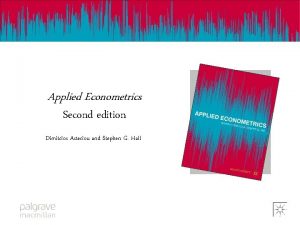Applied Econometrics Second edition Dimitrios Asteriou and Stephen










- Slides: 10

Applied Econometrics Second edition Dimitrios Asteriou and Stephen G. Hall

Applied Econometrics MULTIPLE REGRESSION 1. The Multiple Regression Model 2. The OLS Method of Estimation 3. The R 2 and the Adjusted R 2 4. Hypothesis Testing 5. How to Estimate a Simple Regression in EViews

Applied Econometrics Learning Objectives • Derive mathematically the regression coefficients of a multiple regression model. • Understand the difference between the R 2 and the adjusted R 2 for a multiple regression model. • Appreciate the importance of the various selection criteria for the best regression model. • Conduct hypothesis testing and test linear restrictions, omitted and redundant variables as well as the overall significance of the explanatory variables.

Applied Econometrics Learning Objectives (2) • Obtain the output of a multiple regression estimation using econometric software. • Interpret and discuss the results of a multiple regression estimation output.

Applied Econometrics Multiple Regression Derivation of the OLS • The three variables case (explain on board) • The k-variables case (explain on board) – Requires matrix algebra and it is quite complicated – Luckily Eviews, Mfit and Stata give results very quickly and efficiently (always correct calculations)

Applied Econometrics R 2 and adjusted R 2 • R 2 measures goodness of fit as in Simple Regression • However, it cannot be used for comparing two different equations containing different • numbers of explanatory variables. • When adding more explanatory variables R 2, will always be increased. • Therefore we need a different measure (the adjusted R 2)

Applied Econometrics R 2 and adjusted R 2 • R 2 = ESS/TSS = 1 − RSS/TSS • Adj R 2= • Similar to R 2 but adjusts for degrees of freedom

Applied Econometrics Criteria for Model Selection • Akaike Information Criterion (AIC) • Finite Prediction Error (FPE) • Schwarz Bayesian Criterion (SBC) • Hannan and Quin Criterion (HQC)

Applied Econometrics Multiple Regression in EViews • Step 1 Open EViews. • Step 2 Click File/New/Workfile in order to create a new file or File/Open to open an existing file. • Step 3 Enter the data • Step 4 Type in the EViews command line: ls y c x 2 x 3. . . xk (press ‘enter’)

Applied Econometrics Hypothesis Testing • Testing Individual Coefficients (t-tests) • Testing for Linear Restrictions (Wald Test) – Cobb Douglas Production Function • Testing for the Overall Significance (F-test) • Testing for Omitted Variables (Wald Test) • Testing for Redundant Variables (Wald Test) – Explain all the tests on board…
